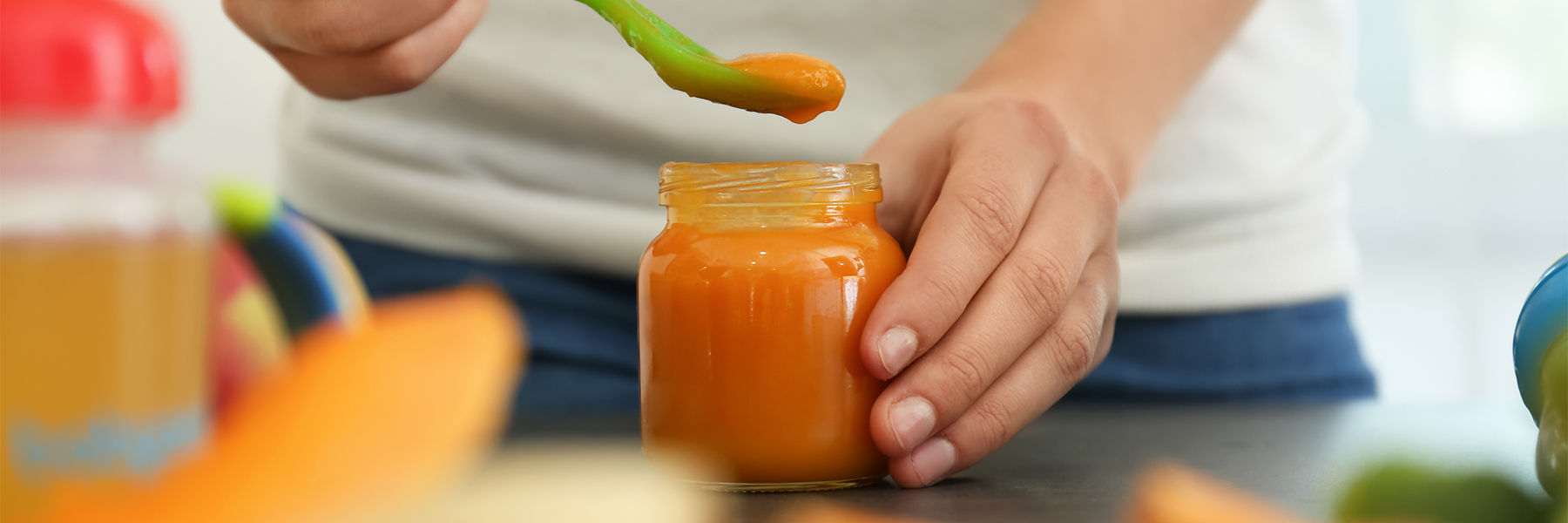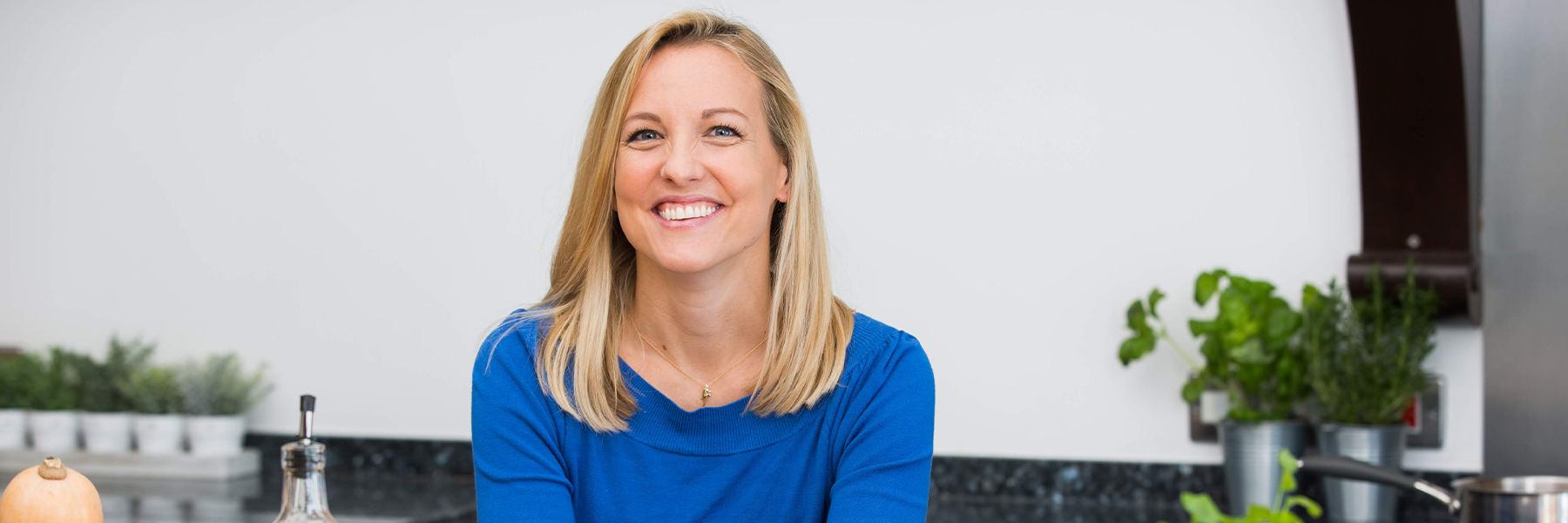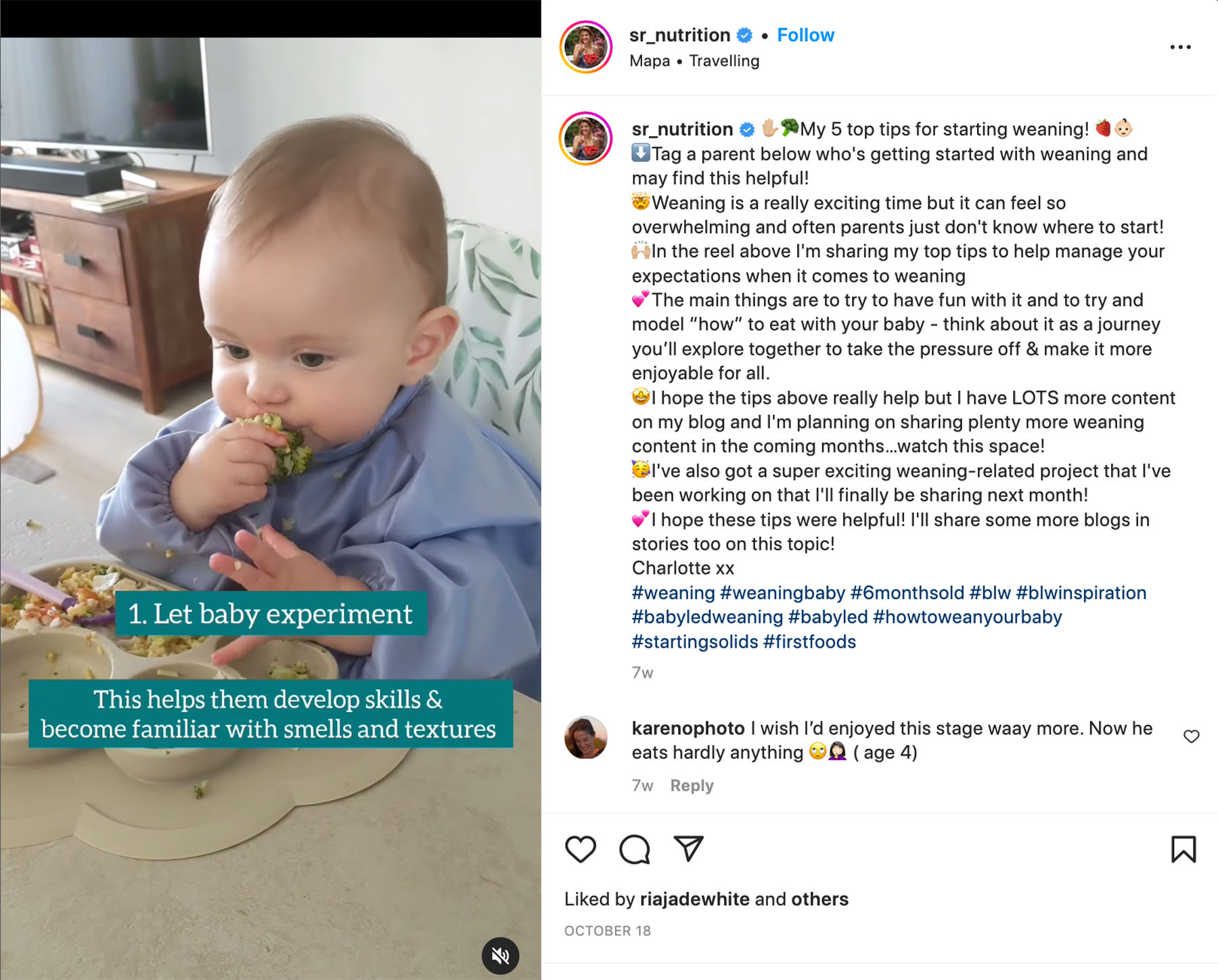Use arrow keys to navigate through the menu items. Use Tab key to navigate through the menu banners.
How to Make Baby Purees

How to Make Baby Purees
Weaning expert Charlotte Stirling-Reed (@sr_nutrition), author of the bestselling book How to Wean Your Baby, explains how to make purees for your baby
Weaning is all about a gradual transition onto family foods. This means moving your baby through textures, for example from purees, to mashed foods, to lumpy foods, to solid foods.
You don’t have to start your baby on purees with a milk-like consistency. A slightly more textured mash, or even super-soft finger foods, are fine.
If you do start your baby with thin purees, it’s a good idea to transition through textures quite quickly and to add in texture early on: research suggests that delaying the introduction of lumps and bumps in babies’ food can result in children being less likely to accept these textures later.

Preparing baby purees
For your baby’s first tastes, I’m a big advocate of starting with savoury veggies. Weaning is all about exploration, and savoury tastes like broccoli, cauliflower, potato and swede are very new flavours for babies get used to. In those first few months, babies are more likely to accept new flavours than later in the weaning journey.
Children are all about familiarity, so the earlier they get used to a variety of different flavours, the more likely they are to eat a wide range of foods throughout their childhood.
I usually recommend over-cooking veg for your baby’s first tastes, so that they’re nice and easy to mash or blend into the consistency you’re looking for. You don’t need any fancy equipment for preparing purees – just a saucepan and a fork can do the trick! A hand blender can be useful if you want, but it’s not necessary.

By making sure the veggies are softly cooked, you can simply mash them down with a fork to make them more manageable for baby. You’ll want to mash or blend them so that there are no large lumps and the texture is the same throughout (no random lumps and chunks).
Whilst you don’t have to add anything extra to those first purees for baby, you may find that you need some extra liquid to help loosen the consistency. Baby’s usual milk is best. This not only thins the puree but will also help to add a familiar taste and some additional nutrients.
You can also add tap water, cow’s milk or plant-based milks, which are all safe to use in food for babies from six months.
Storing baby purees
Babies tend to eat just a few spoonfuls of their first tastes, which can mean a lot of leftovers! Luckily, most purees you make for your baby can be kept in the fridge or frozen to use another day. (If you’ve used frozen veg, such as peas to make a puree, then the leftovers can still be frozen, provided you have cooked them in between.)
The table below shows how long you can store purees that have been prepared with or without various milks.
Courgette puree
Courgette is one of my favourite first foods as it’s easy to cook and is a great way to expose your baby to something savoury.
Ingredients
100g of courgette, skin removed
Splash of baby’s usual milk
Method
-
Slice the courgette lengthways into finger shapes, then chop into cubes.
-
Steam for around 8 minutes, until soft.
-
Add a splash of baby’s usual milk and mash or blend until there are no large lumps. You can add a little more milk or mash more if you want a smoother texture.
Sweet potato, butter bean and cumin mash
This recipe is ideal for the next stage of weaning (once you’ve offered your baby different single veggies). I’m a big fan of using herbs and spices in baby’s cooking early on, as it helps add flavour and gets them used to a variety of tastes.
Ingredients
Half a sweet potato
Small handful of tinned butter beans (around 12)
Tiny pinch of cumin (or other mild spice)
Method
-
Preheat the oven to 200°C or gas mark 6.
-
Bake the sweet potato for around 30-40 minutes (or microwave for around 10 minutes, until soft). Scrape the potato insides out when done and mash with a fork.
-
Heat the butter beans slightly in a pan or in water, or microwave for a few seconds. Heating allows you to pop them out of their shells more easily, as tinned beans are already cooked.
-
Pop them out of their skins, then mash with a fork.
-
Mix the butter bean mash and a pinch of cumin with the sweet potato mash, and serve. You can add a splash of baby’s usual milk for a smoother texture.
About Charlotte
Charlotte Stirling-Reed is ‘The Baby & Child Nutritionist’ and is a Registered Nutritionist with the Association for Nutrition. Charlotte is also an author and mum to little foodies Raffy and Adaline, and owner of consultancy, SR Nutrition. It’s her mission to give parents confidence in feeding their children.
For more advice on weaning your baby and lots of easy-to-follow recipes, her best-selling book How to Wean Your Baby is available to buy now.
Help & Customer service
- Help Centre
- How to shop
- Product recalls
Payment Methodslist with 8 items
- Asda Group of Companies
- Modern Slavery Statement
- Electrical Waste Recycling
- Terms & Conditions
- Customer Review Policy
- Privacy Centre
- Cookie Settings
- Accessibility
© ASDA 2025